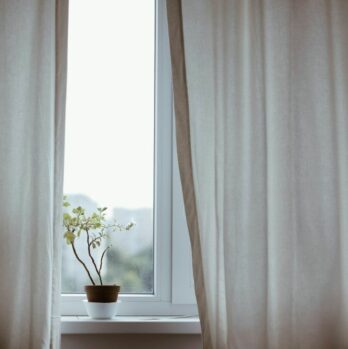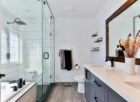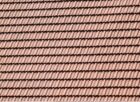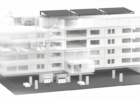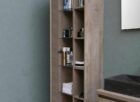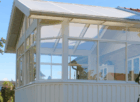[SNEAKY ROOFTOP BARNS ROOMS: A Comprehensive Guide]

Everything You Need to Know About Sloping Ceiling Kids’ Rooms
Introduction:

Sloping ceilings in kids’ rooms, also known as attic or slanted ceilings, have become increasingly popular in recent years. These unique architectural features add charm and character to a child’s space, creating a cozy and whimsical atmosphere. In this article, we will provide a thorough overview of sloping ceiling kids’ rooms, explore the different types and popular designs, analyze quantitative measurements, discuss the variations between different sloping ceiling designs, and delve into the historical pros and cons. So, let’s dive right in!
Understanding Sloping Ceiling Kids’ Rooms
What are sloping ceiling kids’ rooms?
Sloping ceiling kids’ rooms, as the name suggests, are rooms with angled or slanted ceilings. These ceilings are typically found in attic spaces, providing additional architectural interest and a unique layout for a child’s room. Unlike traditional flat ceilings, sloping ceilings offer challenges and opportunities for creative design and space utilization.
Types and Popular Designs
Types of sloping ceiling kids’ rooms:
1. Single Slope: In this design, only one side of the room has a sloping ceiling, creating an asymmetrical layout. This design often allows for additional wall space for furniture placement and storage.
2. Double Slope: Both sides of the room have sloping ceilings, resulting in a symmetrical layout. This design can add a cozy and intimate feel to the space.
3. Combination Slope: Some rooms may have a combination of sloping and flat ceilings, providing a unique mix of exposed beams and traditional ceiling height.
4. Loft Style: Loft-style sloping ceiling rooms maximize vertical space by incorporating a raised bed or play area, leaving the rest of the room open for various purposes.
Popular designs and themes:
1. Magical Wonderland: Transform the room into a fairy tale land, with twinkling lights, dreamy wallpapers, and whimsical furniture.
2. Adventure Haven: Create a space for little adventurers by incorporating a jungle theme, treehouse-inspired bunk beds, and adventurous wall murals.
3. Sports Zone: Design the room to fulfill a child’s sports passion, with sports-themed wallpaper, a mini basketball hoop, or soccer goal.
4. Space Explorer: Foster an interest in astronomy by utilizing celestial wallpapers, glow-in-the-dark stars, and space-themed furniture.
Quantitative Measurements
When designing sloping ceiling kids’ rooms, it is essential to consider specific quantitative measurements:
1. Ceiling Height: Measure the tallest point of the ceiling and the lowest point, as this will determine how much headspace is available for furniture and activities.
2. Floor Space: Calculate the total floor area to determine the room’s potential for various furniture arrangements and play zones.
3. Angle of Slope: Measure the angle of the sloping ceiling to assess its impact on wall placement and furniture layout.
4. Storage Solutions: Assess the available wall space to plan for built-in storage or freestanding units for keeping toys, books, and clothes organized.
Exploring Differences Between Sloping Ceiling Designs
While sloping ceiling kids’ rooms share common features, such as angled walls and lower headroom, significant variations exist between different designs:
1. Symmetry vs. Asymmetry: Single slope designs offer more flexibility for furniture placement due to an asymmetrical layout, while double slope designs often create a more balanced space.
2. Furniture Positioning: Depending on the angles of the sloping ceiling, furniture must be carefully positioned to maximize the usable space and avoid visual clutter.
3. Lighting Considerations: The orientation of the sloping ceiling affects natural light penetration and artificial lighting placement, requiring mindful consideration for optimal illumination.
4. Acoustic Challenges: The sloping ceiling’s angles may impact sound reflection and amplification, necessitating the use of acoustic panels or sound-absorbing materials.
A Historical Perspective on Pros and Cons
The evolution of sloping ceiling kids’ rooms has led to various advantages and disadvantages over time:
Advantages:
1. Unique Aesthetic Appeal: Sloping ceilings add character and uniqueness to a child’s room, making it a visually striking space.
2. Cozy Atmosphere: The lower height and sloping angles create a snug and intimate feel, perfect for nurturing creativity and imaginative play.
3. Space Utilization: Sloping ceilings offer opportunities for creative storage solutions, maximizing every inch of the room.
4. Value Addition: Converting an attic space into a sloping ceiling kids’ room can increase the overall value of a house.
Disadvantages:
1. Limited Headroom: The lower ceiling height can be restrictive for taller children or adults, requiring careful consideration of furniture placement.
2. Design Challenges: Working with sloping ceilings requires creative problem-solving to optimize space and minimize visual imbalances.
3. Installation Costs: Retrofitting an attic or adding sloping ceilings can involve significant expenses, including insulation and structural modifications.
Conclusion:
Sloping ceiling kids’ rooms offer a unique and captivating environment for children. Whether it’s a single slope or a double slope design, each variation presents different opportunities and challenges. By considering quantitative measurements, understanding the differences between designs, and appreciating the historical pros and cons, parents can create a magical sanctuary for their little ones. With careful planning and thoughtful design choices, sloping ceiling kids’ rooms can become a favorite space for play, creativity, and growth.
